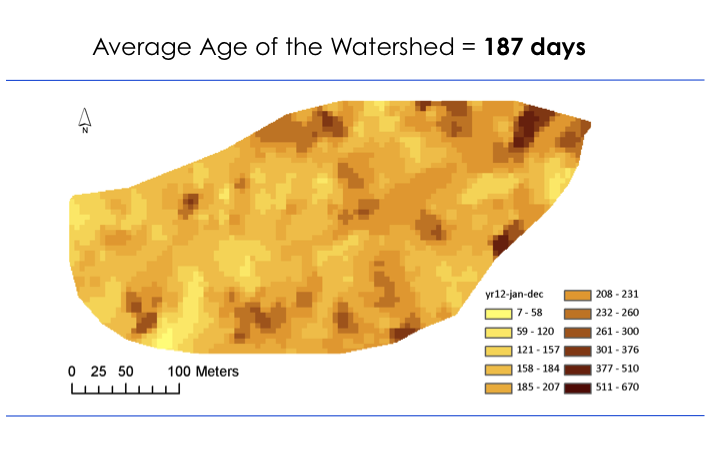OVERVIEW | MODEL SYSTEM | DOCUMENTS | DOWNLOADS | DEVELOP | PCS-CMAES | PIHM-AGE
'age' of water: a physics based, fully coupled, distributed model for watershed assessment
OVERVIEW
Understanding the spatial distribution of processes in a watershed is critical to manage water resources and ecosystem functions. Clearly, this banks on our ability at simulating multiple physical and biological phenomena and predictions of various spatially distributed hydrologic states and fluxes across the watershed. Various multi-scale applications of Penn State Integrated Hydrologic Modeling System (PIHM) have demonstrated the model skill to simulate processes accounting for spatially explicit information associated with topography, climate, vegetation, soil and geology. The various level of heterogeneity in space and time makes it complex to interpret the hydrology of the watershed due to the volume of data involved. We use the 'age' of water as a concept that fundamentally combines the response of various hydrologic processes leading to the characterization of a watershed. Nonetheless it also allows a unique way to validate the process representation and calibration. The model system was applied to Susquehanna - Shale Hills Critical Zone Observatory (SSHCZO) in Pennsylvania. Deuterium isotope samples collected for the rainfall events in 2009 - 2010 were used to force the PIHM water quality model. Isotope concentration measurements of the samples collected from groundwater and streamflow were used to validate the model predictions along with other hydrologic variables such as streamflow, soil moisture and groundwater levels. The model results show spatial heterogeneity in the aging process and a strong annual cycle in the streamflow response.
